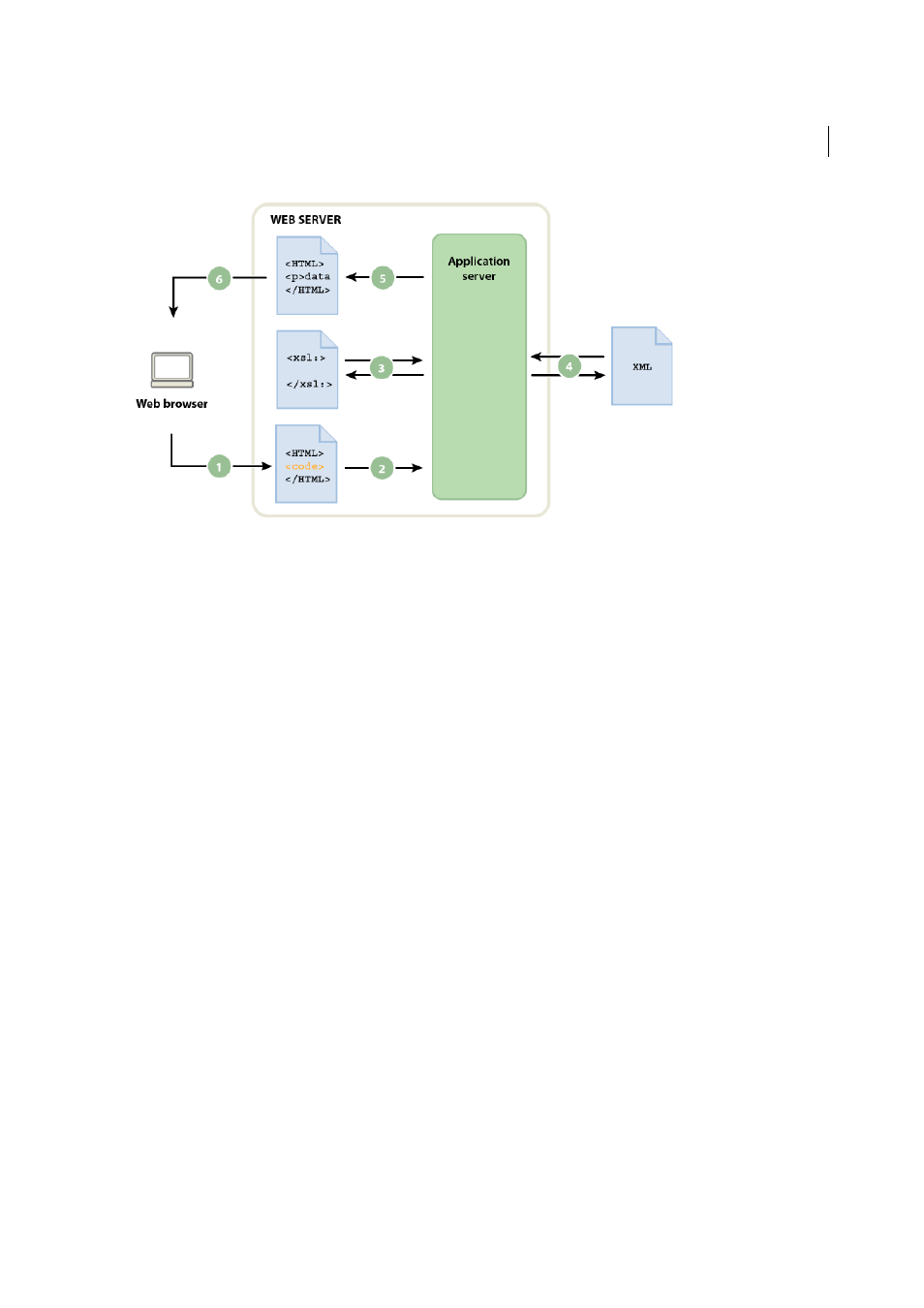Client-side xsl transformations – Adobe Dreamweaver CC 2015 User Manual
Page 514

507
XML
Last updated 6/3/2015
A Browser requests dynamic page B Web server finds page and passes it to application server C Application server scans page for instructions
and gets XSLT fragment
D Application server performs transformation (reads XSLT fragment, gets and formats xml data) E Application server
inserts transformed fragment into page and passes it back to the web server
F Web server sends finished page to browser
You use the XSL Transformation server behavior to insert the reference to an XSLT fragment in a dynamic page. When
you insert the reference, Dreamweaver generates an includes/MM_XSLTransform/ folder in the site’s root folder that
contains a runtime library file. The application server uses the functions defined in this file when transforming the
specified XML data. The file is responsible for fetching the XML data and XSLT fragments, performing the XSL
transformation, and outputting the results on the web page.
The file containing the XSLT fragment, the XML file containing your data, and the generated run-time library file must
all be on the server for your page to display correctly. (If you select a remote XML file as your data source—one from
an RSS feed, for example—that file must of course reside somewhere else on the Internet.)
You can also use Dreamweaver to create entire XSLT pages for use with server-side transformations. An entire XSLT
page works in exactly the same way as an XSLT fragment, only when you insert the reference to the entire XSLT page
using the XSL Transformation server behavior, you are inserting the full contents of an HTML page. Thus, the dynamic
page (the .cfm, .php, or .asp page that acts as the container page) must be cleared of all HTML before you insert the
reference.
Dreamweaver supports XSL transformations for ColdFusion, ASP, and PHP pages.
Note: Your server must be correctly configured to perform server-side transformations. For more information, contact your
server administrator.
Client-side XSL transformations
You can perform XSL transformations on the client without the use of an application server. You can use Dreamweaver
to create an entire XSLT page that will do this; however, client-side transformations require manipulation of the XML
file that contains the data you want to display. Additionally, client-side transformations will only work in modern
browsers (Internet Explorer 6, Netscape 8, Mozilla 1.8, and Firefox 1.0.2). For more information on browsers that do
and don’t support XSL transformations, see
